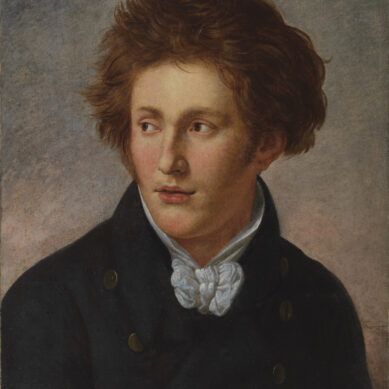You searched
Painter
Cleto Luzzi
Are you interested in the sales or the purchase of his artworks?
We buy works of this artist
and of other painters and sculptors from the 16th century to the first half of the 20th century
The Berardi gallery offers a free and without obligation service for evaluation of ancient and modern art . To find your way in the art market, very complex and full of nuances, it is better to rely on a professional consultant who can answer fast and concretely to your needs. The clarity of the answers will resolve effectively the need to estimate or sell an asset.
Contact us immediately without commitment
Answers also in 24 hours:
Cleto Luzzi
Cleto Luzzi
Cleto Luzzi belongs to that still nourished category of artists lived between the Nineteenth and the Twentieth centuries who fell into oblivion and were forgotten by the critics. This assumption seems in some ways paradoxical if one considers that, during his career, Luzzi not only managed to earn important commissions and awards but, from 1929 to 1932, he had the privilege of becoming the official painter of the King of Siam.
Trained in direct contact with the late Nineteenth-century academic culture, Luzzi studied at the Istituto di Belle Arti of Rome under the guidance of two masters of exception: Francesco Jacovacci and Giulio Aristide Sartorio.
From the first he received a certain indulgence towards the ‘bozzettismo’, clearly visible, for example, in the juvenile paintings and watercolours “of genre” set in the more affected and rococò Eighteenth century. From Sartorio, on the other hand, he learned the techniques necessary for the correct execution of the monumental decorative art, a field that Luzzi often frequented with considerable success.
Soon specialized in the decoration of religious buildings in Rome, in 1914 he frescoed the church of San Nicola de’ Prefetti adopting a correct, but not too original, classicism.
With the same approach, he then painted numerous altarpieces (for example in San Claudio, in San Giuseppe a Capo le Case, in the church of Santa Maria Margherita Alacoque, near Sant’Eusebio and, again, in the chapel of the Preziosissimo Sangue at the Verano Cemetery where in 1940 he painted the Via Crucis).
An evident change of register, instead, appears in the paintings made in the East (Siam, Cambodia, India, Indochina, Burma). After moving to Bangkok with the office of director of the Royal Academy of Fine Arts and Court Painter (1929), Luzzi seemed to open up to experimentation. The traditionalist and oleographic tone of the works painted in Italy gave way to a more free language, devised on refined chromatism and agile brushstrokes in the divisionist manner. Sometimes with a very personal approach, sometimes stereotyped on the Orientalism canons,
Luzzi painted temples, local monuments, fascinating naturalistic visions and even exotic “snapshots” of everyday life. If in India he did not renounce to portraying a confident snake charmer, in Cambodia he was attracted by the ruins of Angkor Wat and, with lyricism and colouristic sensitivity, he realized a suggestive view of the temple complex at sunset.
Certainly, the Eastern light played a crucial role for Luzzi’s openness to a more intimate and sought-after naturalism; however, the formal data of the cited painting Angkor Wat (1930), make us understand how much already in Rome the artist meditated on the landscape painting, for example that by Enrico Coleman and his master Sartorio.
Although gifted with considerable talent, Cleto Luzzi was soon, unjustly, forgotten. After his death, a series of retrospective exhibitions (organized in 1956 at the Palazzo delle Esposizioni in Rome and at the Collegio Nazareno, in 1958 at the Circolo di Forestieri di Sorrento) were not enough to keep the painter’s name in vogue.





